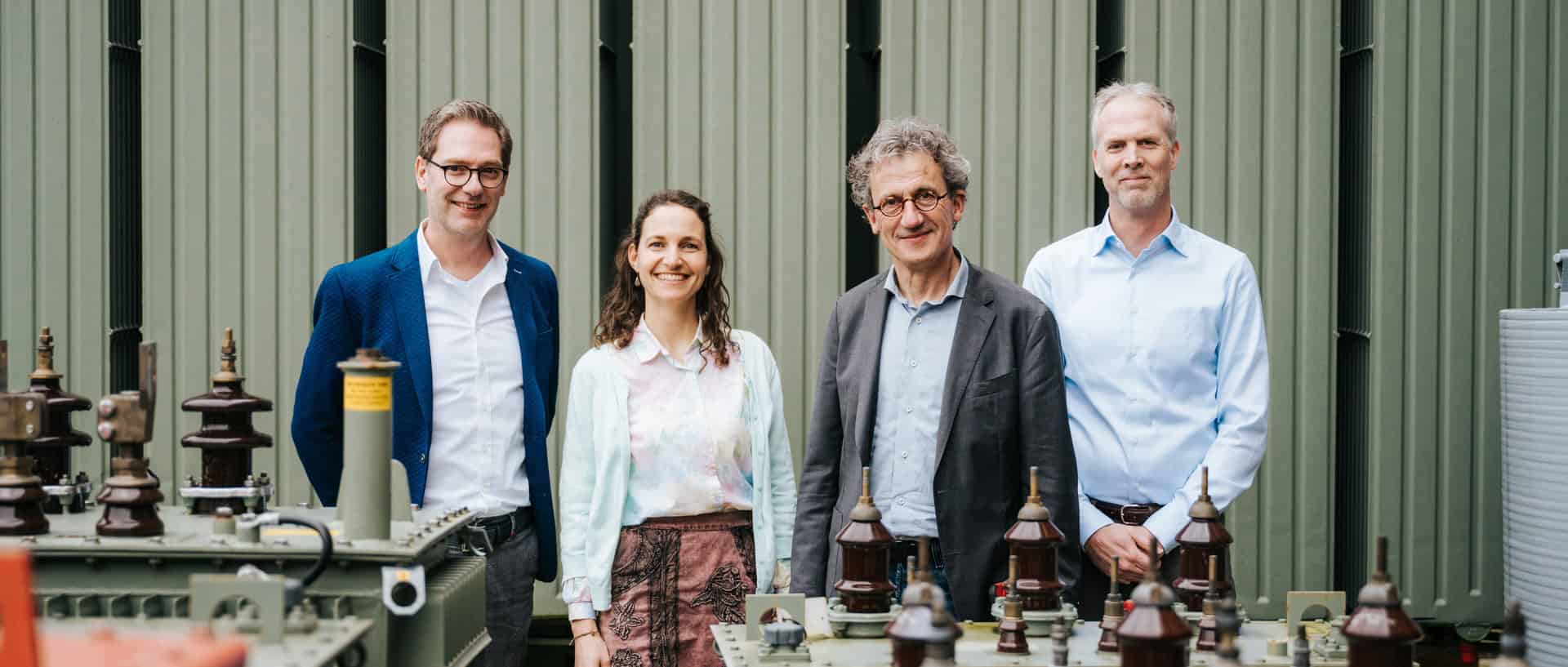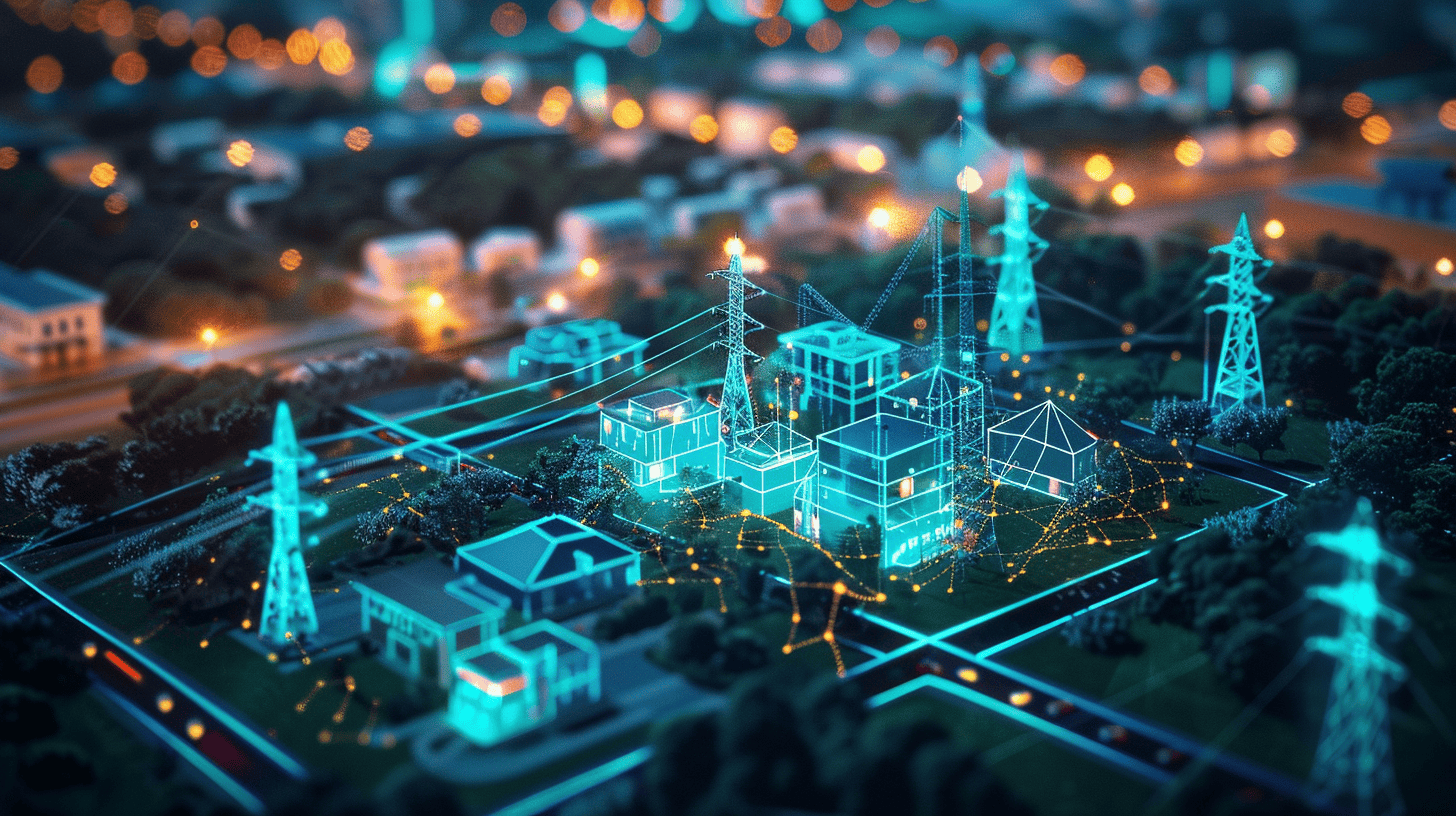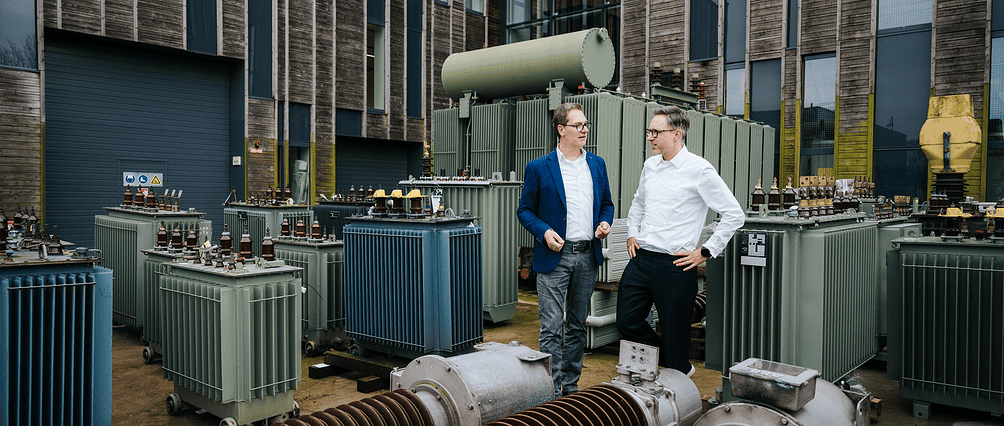
The electricity grid in the Netherlands faces major challenges. The rapidly increasing demand for electricity makes it necessary to expand the grid drastically. At the same time, this also leads to significant congestion problems. Both on the power purchase and generation side, the grid is congested. As a result, both investors in renewable energy and consumers and businesses that need energy cannot be connected. This while we rely heavily on the electrification of energy sources for the transition to a sustainable energy economy: a major challenge that requires innovative solutions. In an explanation, Invest-NL explains the role different parties can play in this.
The ‘Circular Energy Economy’ coalition, consisting of grid operators and suppliers, has been established to realize innovative solutions to the congested energy grid. One of the problems they are addressing is upgrading power transformers, thousands of which must be replaced in the Netherlands. Costs of complete replacement are high, raw materials are scarce, personnel are scarce, and (re)construction permits are also time-consuming.
Bottlenecks in the grid
An innovative solution was developed last March in the high-voltage lab of Alliander in Duiven, one of the Dutch grid operators. With Alliander and other grid operators, Invest-NL launched a project to accelerate the circular approach to energy transition, with a special focus on power transformers.
Over 2,500 of these expensive devices cost several million each in the Netherlands. To achieve higher capacity, the power transformers need to be replaced.

The importance of power transformers
Power transformers are electrical devices that increase or decrease electricity voltage in power networks. They play a crucial role in efficiently transporting electricity over long distances by raising the voltage for transmission and lowering it for safe use in homes and businesses.
Guy de Sévaux, Teamlead Biobased & Circular Economy at Invest-NL, explains: “We have started a project with Alliander and other grid operators to increase the circularity of grids. We are now looking at whether we don’t need to replace the transformers but might be able to upgrade them with refurbishment, just as if you give a car a turbo and, in that way, can bring it up to greater capacity.”
By renewing existing transformers and increasing their load capacity, costly and time-consuming transformer replacement can be avoided. This saves money, raw materials, time, and manpower.
Just like giving a car a turbocharger and thus being able to increase its capacity.
Guy de Sévaux, Teamlead Biobased & Circular Economy at Invest-NL
Customization as a solution
The project examines whether transformers can be upgraded instead of replaced. Some modifications, mainly aimed at improving temperature management, can increase the load capacity.
Rory Leich, Sustainable Energy Perspective consultant at Alliander, explains, “The idea is to increase the load capacity by adding some modifications to transformers. Lowering the whole temperature management so we can increase loadability. This approach is going to increase the load capacity of transformers significantly. I estimate that you can get about 30 to 50 percent more power out of a power transformer by looking at some more customization and adding some modifications.”

Invest-NL has taught us to engage much more intensively with those market participants about the investment opportunities, but also the bottlenecks that actually play a role as well.
Koen Eising, CSR director at Alliander
Material reduction and sustainability
Not only does this approach save money and resources, but it also keeps existing components in operation longer and allows for faster grid repair and expansion.
Koen Eising, CSR Director at Alliander, emphasizes, “Not only in the Netherlands do we need to double the grid. But all over the world, this is happening. We actually see an exponential increase after 2030. You have to prepare for that now. And the interesting thing about circular entrepreneurship, where you deal carefully with your raw materials, is that we can overhaul certain components more easily. We are doing a lot of remanufacturing. Then, you can keep existing components in operation for longer. And it directly affects that we can repair the grid faster, expand faster, and are less likely to miss out on scarce components.”

The success of this project is largely due to the cooperation between various parties. Guy de Sévaux sums this up based on the session in Duiven: “Today all the suppliers and the grid operators sat down together to decide that together they can give these existing transformers a new life. And thereby help grid congestion in the Netherlands a lot forward.”
In addition to Invest-NL and Alliander, Enexis, Gasunie and Fedet are also involved in this project, working together to create a sustainable and future-proof energy supply in the Netherlands.

